
I am very fortunate to have recently concluded my 15th successful season of dogging in Botswana…with only one of those years not being successful in having a den to observe, even though we did have a pack of 13 in the area that year.
Wild dogs - this is a terrible name for these spectacular predators, and I do prefer the term painted wolves, which is the meaning of their Latin name, Lycaon pictus – for it evokes ideas of domestic dogs gone feral, which is a far cry from the reality of these truly extraordinary and social animals.
There are probably fewer that 5000 painted wolves remaining in the wilds of Africa (some say as few as 3500) and the animal is regarded as the continent’s most endangered large carnivore. But while their relative rarity does make them a special sighting on any safari, it is their social structure that makes them truly special to watch and follow.
The most social of the dog species, painted wolves occur in packs numbering from single digits to as many as 40, 50 or even 60 and these tri-coloured predators should be highly successful and far from endangered. They are the most successful hunters of all predators with a success rate that can measure over 80%, and the entire pack devote themselves to raising the next generation of puppies each year. However, because of their social structure they are very prone to disease (their constant mouth-to-mouth contact ensures any disease is spread rapidly through the pack) while persecution by humans – including wildlife managers and park wardens as recently as 50 or 60 years ago – has resulted in sightings of wild dogs or painted wolves being a relative rarity throughout their range in Africa.
But it is their devotion to the overall good of the pack that makes the dogs so extraordinary to watch, particularly during the denning season, when the ability to find and observe them every day is most assured – so long as the whereabouts of the den is known and accessible.
In recent years on my annual “Wild Dogs of Botswana” safaris (which I run in the denning season, June-August, each year) my guests and I have been fortunate to get to know several packs in northern Botswana really well, and observe some unusual behaviour too.
Typically within any pack there is a dominant, or alpha, pair and only these two mate and produce pups. The rest of the pack then dedicates their existence to assisting in raising the youngsters – protecting the den, keeping it clean, assuming “nanny” duties and, importantly, hunting sometimes twice a day in order to bring food to the pups back in the den. With litters quite capable of being anywhere from 12-18 pups, this latter duty requires considerable dedication as the fast-growing pups become more ravenous in their second and third months.
Packs usually comprise a group of closely related males, most often siblings, and unrelated females other than youngsters yet to migrate to new packs. One of the interesting aspects of the makeup of Lycaon pictus packs is this constancy of the male lineage – it is the females that typically emigrate from the pack of their birth to find a new pack or a group of independent males, where only one will be likely to join up with a male and become the new alpha female. Her sisters will have to be satisfied with a secondary role…or migrate again!
However, research and DNA studies too complex to go into in depth here indicate that most dogs invest in this system as they have the greatest chance in successfully furthering their genetic line within the pack system. If all males within a pack are of one genetic line, and all females of another, all pups born will therefore carry 50% of the genes of each sex. With the typically large number of pups born, the communal support system for the litter means that in one season each member of a pack should see their genetic lineage furthered quite extensively, even if they have not bred themselves.
So my observances in the past few years have been particularly interesting. In 2014 one of the packs I have followed for more than a decade was disrupted by the death or disappearance of both the alpha male and alpha female and the pack was left leaderless. The pack disintegrated and soon a group of females joined up with a neighbouring group of males…where several matings took place and three females produced litters…all within the same new pack and within close proximity to each other. Eventually one of the females gained ascendancy (interestingly, not the biggest or most dominant), driving off one and subduing another, and taking all the pups into her own den. What occurred underground we have no idea of, but soon the “more than 20” pups had been whittled down to 13…of which 11 have survived into this season and are now rambunctious yearlings.
So far, so good. In 2015 however, while last season’s supposed alpha female – the one that raised the pups – is still with the pack, she has become subordinate to another female who has assumed the alpha female role, along with the same male who fathered last year’s successful litter! The 2014 female appears to be quite content with her lower status in the pack, while the 2015 female certainly does appear to be the more dominant and in fact overall leader of this pack.
The same genetic reasoning outlined above would appear to be the explanation for this unusual (to me, anyway) situation – it makes no difference to the 2014 female who breeds…the pups will still be carrying her genes as it is most probable that the 2015 female is one of her sisters.
The second pack I have followed, albeit for a much shorter period, also displayed some unusual behaviour this season. While the highly successful but aging alpha female is still alive and very much the leader of the pack (pack leadership usually falls to one of the alpha pair) she was not the breeding female within the pack this year. Instead that duty fell to one of her daughters, and only DNA tests would be able to determine if it was her father who impregnated her. Another likely and possible scenario is that this female emigrated, met another pack or group of males, fell pregnant, but then decided she did not enjoy the new pack or grouping and returned to her natal pack. Again, only DNA tests could help determine this for certain…but this would have to happen soon as lions have killed most of these pups, with only one surviving!
Keeping up with the shenanigans of these packs of painted wolves each year is like catching up on a long-running soap opera after a year away from TV, and it really is only by being able to enjoy the privilege of sitting quietly watching the pups, yearlings and adults around the den, and following the pack when they leave to go on a hunt, that one can truly immerse oneself into their lives.
Perhaps the most fascinating – and endearing - aspect of the pack behaviour is how each and every member of the pack, from the alpha pair, of course, through the subordinates and the yearlings, is involved in caring for the pups and show an interest, indeed a fascination, for every aspect of their lives.
Throughout the day, when the pack usually rests in the shade near the den, dogs will come and go, poking their heads into the den entrance to ensure all is well below ground (dens are usually inside old termite mounds, in holes excavated & extended by animals such as aardvarks, warthogs and hyaenas), cleaning up any scraps of meat or puppy scats that could result in an odour that might attract the attention of other predators, and generally keeping a close watch on the surrounding bush for rivals.
The absolute frenzy of excitement shown by other pack members whenever the pups emerge from the den, with each dog apparently vying to show the most affection and attention, and the extraordinary scenes just before the pack sets off on the morning or evening hunt, when the puppies are called from the den for what appears to be a massive love-fest – “Don’t worry, we’ll be back soon, with lots more food for you!” - is heartwarming.
I’m usually totally flabbergasted each year while in these camps that the general attitude of most other guests is one of nonchalance or even total disinterest in these fascinating carnivores, most being far more interested in watching lions lyin’ asleep under a bush than observing the ongoing events around the dens.
If you are interested in joining me at the dens next year in July or August, please contact me now – group size is limited to only 4 per departure and these trips usually sell out well in advance.
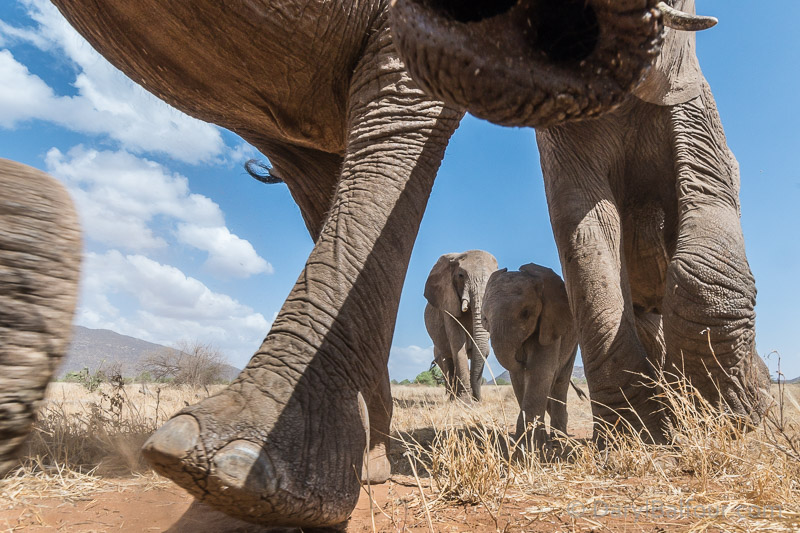
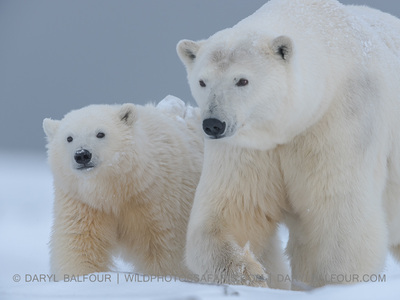
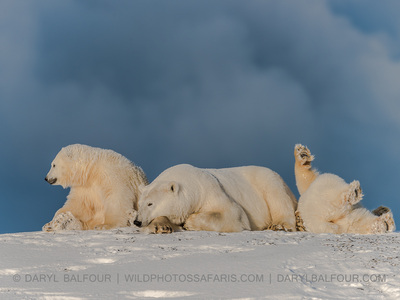
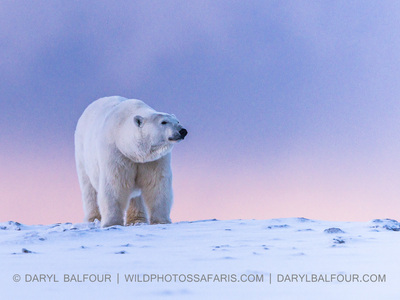
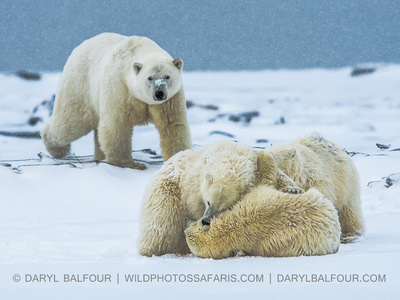

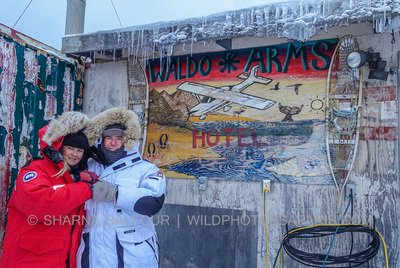
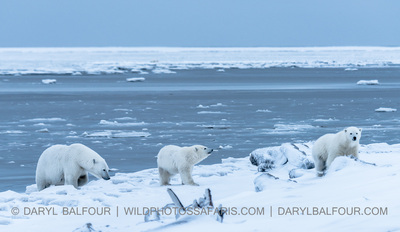

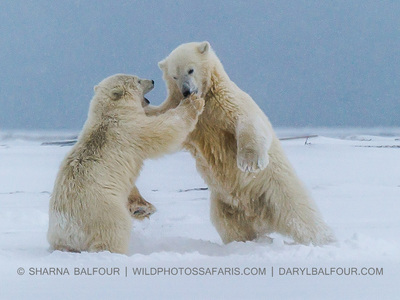
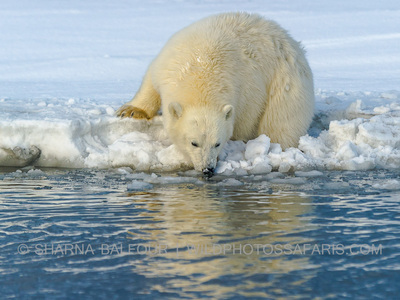


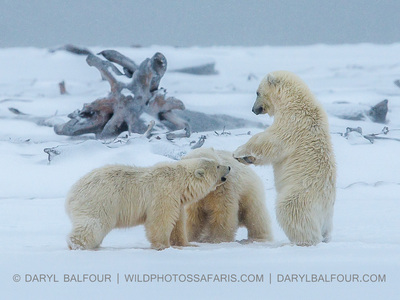

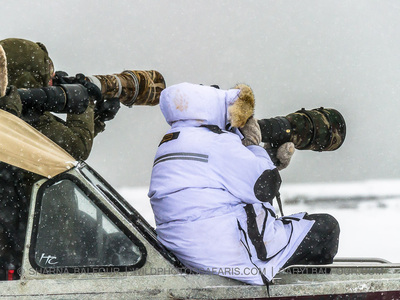



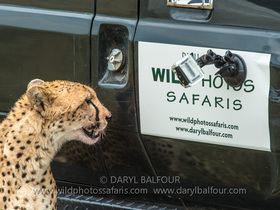
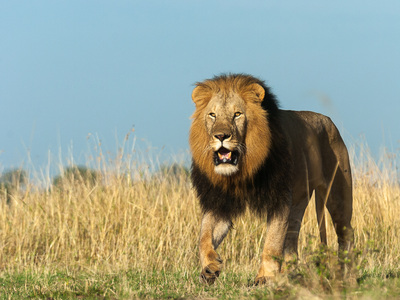
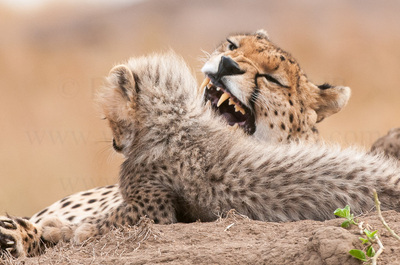
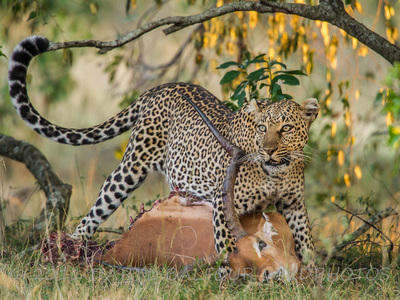

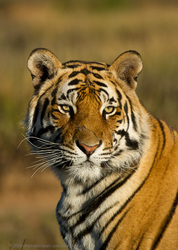


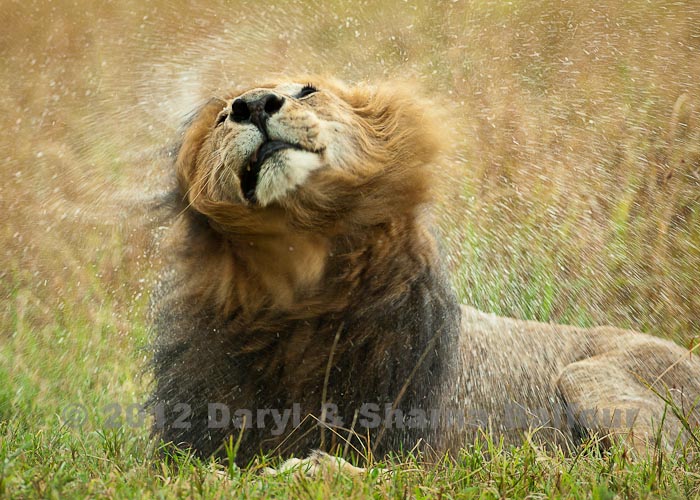
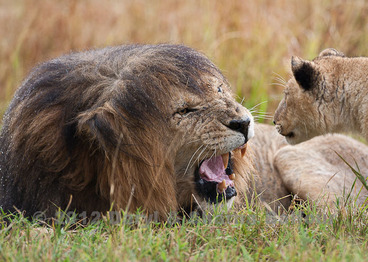



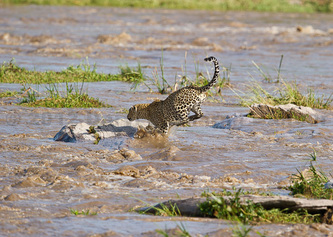

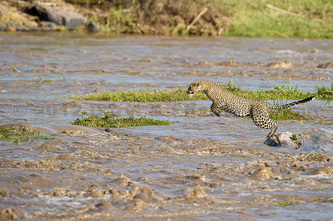
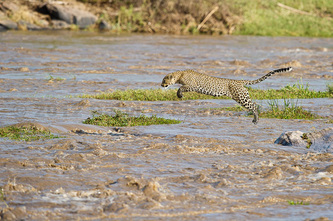


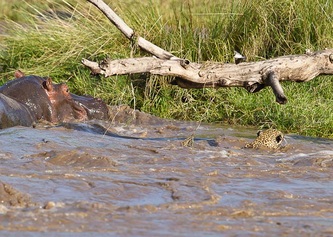
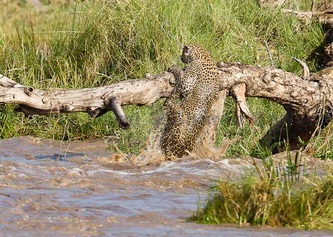
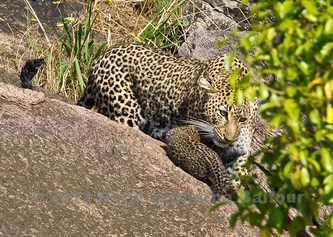
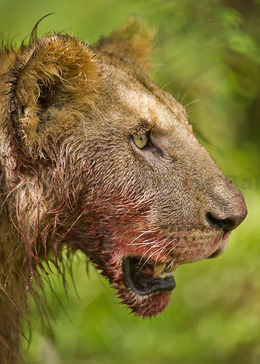
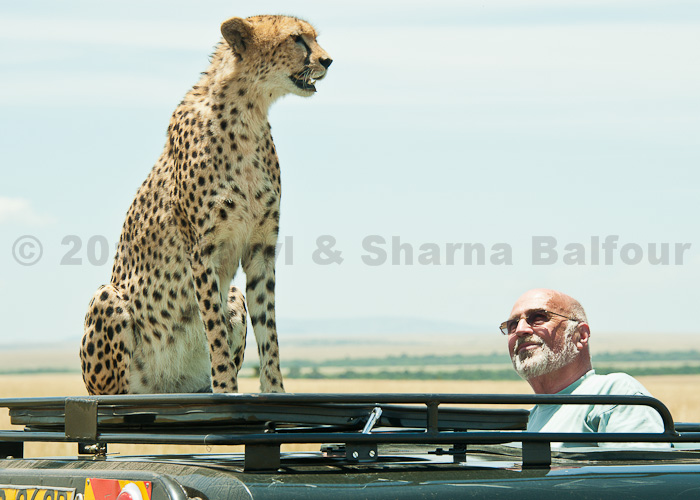


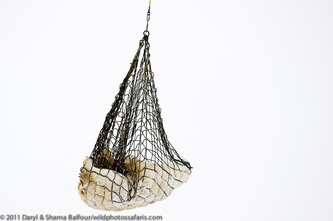
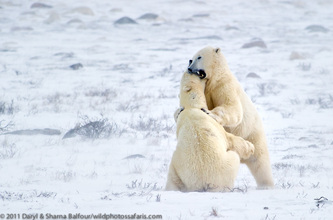

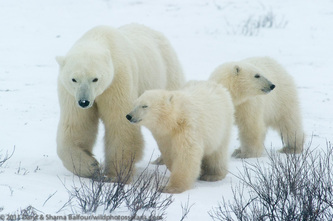

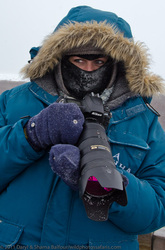
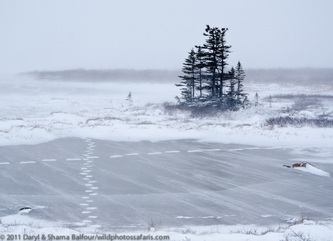


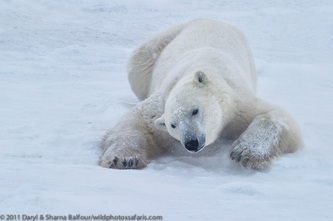


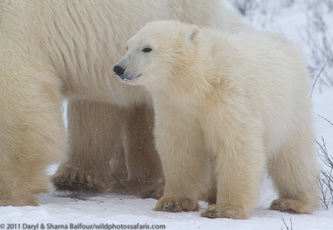
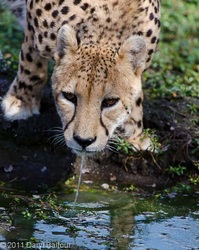
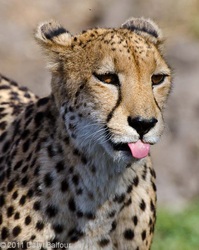
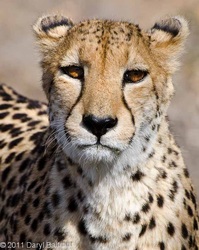
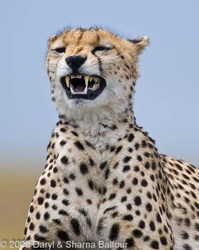
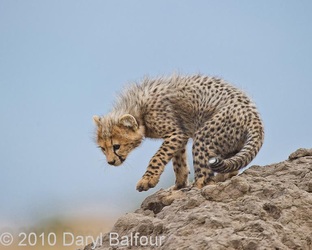
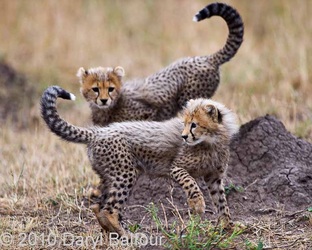
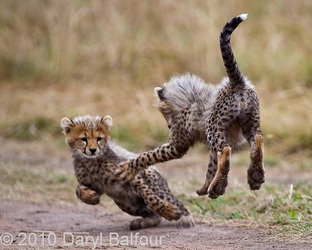

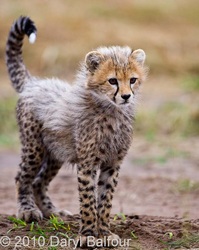

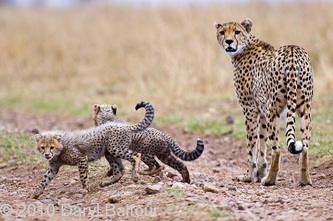



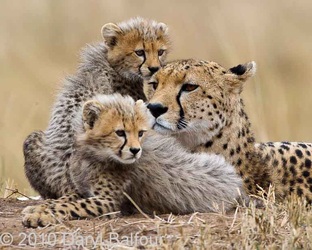

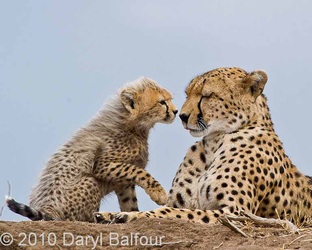

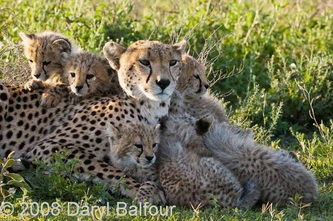

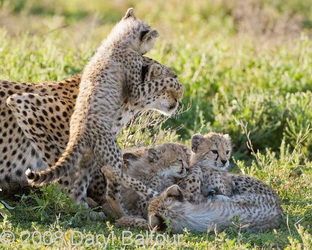

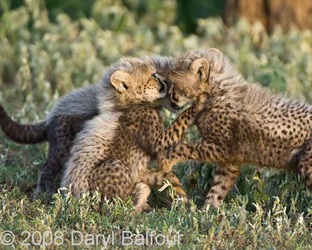
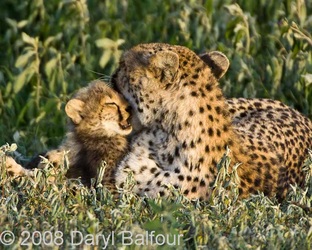

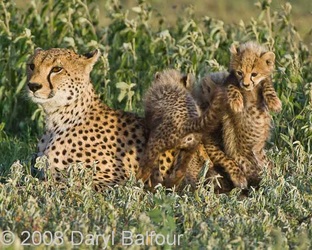







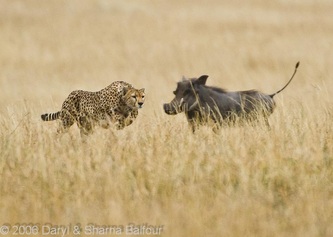
 RSS Feed
RSS Feed
